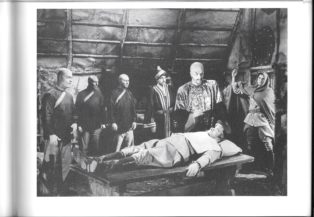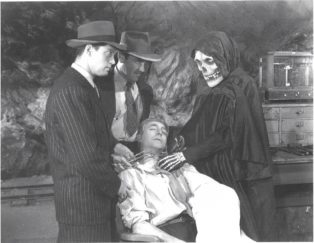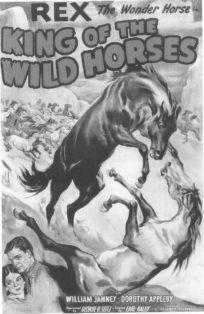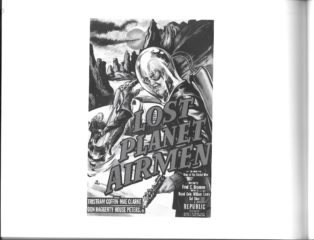Enter now to win a copy of
Cowboys, Creatures and Classics: The Story of Republic Pictures
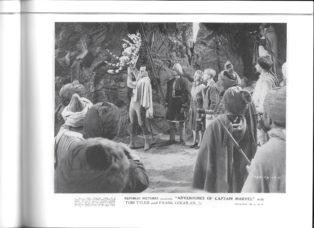
A popular character Republic Pictures was allowed to introduce in one of its chapter plays was Captain Marvel. Also known as Shazam, the superhero was created in 1939 by artist C. C. Beck and writer Bill Parker for Fawcett Comics. Captain Marvel was the most popular comic book superhero of the 1940s. He was also the first to be adapted into film. The film was entitled Adventures of Captain Marvel.
In an interdepartmental memo passed from various executives at Republic to Herbert Yates, the project was touted as having “massive potential to be a box office hit.” The twelve-part series premiered in March 1941. The plot of the chapter play was described in the following way:
After a dozen spine-tingling chapters, Billy is bound and gagged so he cannot utter the word. He tricks the Scorpion into releasing the gag in order, as he pretends, to explain to him the secret of his invulnerability. Once released, he cries, “Shazam” and becomes Captain Marvel. He is able to free himself and his friends and expose the Scorpion once and for all.
The collaboration between Republic Pictures and Fawcett Comics continued after the release of the Captain Marvel serial. In 1942, the two entities brought the character Spy Smasher to the screen. Spy Smasher is a costumed vigilante and freelance agent who battles a Nazi villain known as the Mask. The Mask heads a gang of saboteurs determined to spread destruction across America. According to author and film historian Alan G. Barbour, the Mask was the first in a long line of stereotypes that pictured hard-faced Nazis as propagandist tyrants.
Spy Smasher was a twelve-part serial that was shot in thirty-eight days. Production began on December 22, 1941, just a few days after the Japanese bombing of Pearl Harbor. The Spy Smasher wore a cape, leaped from bridges onto fast-moving cars, outgunned Nazi devils, and escaped from all types of death traps, from burning tunnels to compartments slowly filling with water. Spy Smasher used a number of gadgets, among them being various laser beams and his fire-resistant cape, to foil the Nazis’ plans.
Daredevils of the Red Circle was a twelve-part serial that included a cape-wearing villain. The suspenseful, spine-tingling, mystery film told the tale of diabolical mastermind Harry Crowel, a.k.a. Prisoner 39013. Crowel escapes from prison and, aided by a seemingly endless supply of henchmen, sets out to destroy all holdings of industrialist Horace Granville, the man who put him in prison. One target is an amusement park, home of three Daredevils of the Red Circle who perform death-defying stunts. When head Daredevil Gene’s kid brother is killed in Crowel’s attack, the three heroes swear to capture Prisoner 39013. Unbeknownst to them, he is holding the real Granville captive and, with a near perfect disguise, has taken his place. A mysterious cloaked figure known as the Red Circle aides the daredevils in their crusade.
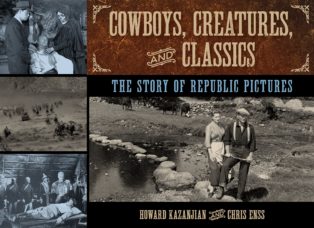
To learn more about the many films Republic Pictures produced read
Cowboys, Creatures and Classics: The Story of Republic Pictures

